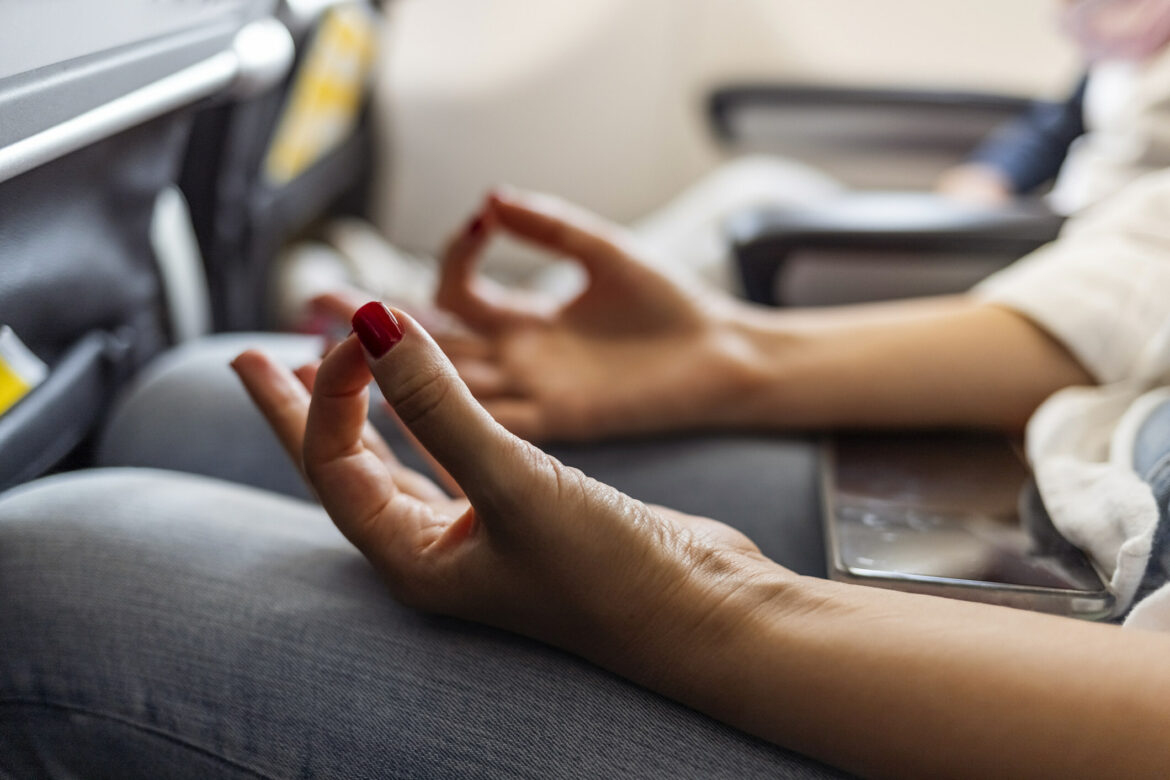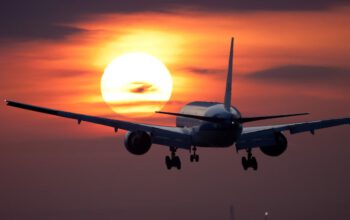It's well known that airline travel is safer than travelling by car, yet fear of flying – or aviophobia – remains one of the most common phobias of modern life, believed to affect around one in ten of the population.
André Viljoen, former commercial airline pilot and logistics manager at Artemis Aerospace, offers some positive advice to help beat anxiety when you next board an aircraft.
Clicking on the “Read Full Article” link below will auto-scroll you to the full article (same page).
Artemis Aerospace: how to cure a fear of flying – six tips for stress free travel
By André Viljoen
As a former commercial pilot, it wasn't unusual to hear of passengers experiencing anxiety or panic attacks during a flight. While cabin crew are trained to calm and reassure passengers, it can be a distressing experience for the sufferer, and unsettling for fellow travellers.
Most of us know that fear of flying is irrational. Statistics consistently reveal that air travel is far safer than other modes of transport. Latest figures from the International Civil Aviation Organisation (ICAO) reveal 2.14 accidents per 1.93 million global scheduled departures in 2021, resulting in 104 fatalities. Secretary General of the ICAO, Juan Carlos Salazar, said the statistics confirmed yet again that ‘air transport is the safest mode of transport.'
Compare this to road travel, where in Britain alone there were 927 road users killed in 2021, with over 65,000 people suffering injuries in road traffic accidents. Globally, more than 1.35 million people die in road accidents every year.
Statistics aside, there's something about air travel that continues to unnerve passengers. Perhaps it's the claustrophobia of the cabin, underlying anxiety about journeying a long way from home, or even the in-flight safety demonstration that tips people over the edge.
So, what can be done to address this very real problem? These six practical strategies are proven to help people reduce the fear associated with flying.
Exposure-based techniques
The age-old advice to ‘face up to your fears' really can help overcome phobias. Gradual exposure to a situation that triggers negative emotions can help us to learn that our worst fears are highly unlikely to be realised.
Under the guidance of a trained therapist, exposure-based programmes introduce techniques to lessen anxiety prior to a flight. After a few sessions, therapists may accompany a client on a flight or flight simulator. However, with the development of virtual reality, clients can now wear VR headsets to mimic onboard conditions – a much cheaper but very effective option.
Education
Many people who dread flying admit to feeling baffled over the mechanics of air travel. ‘How can this great lump of metal climb into the sky?' is a common question. Educating yourself on the principles of aviation can be a huge help. You could conduct your own research online, or, even better, book onto a dedicated course aimed at curing aviophobia. Many airlines run such programmes with high success rates. For example, British Airways' Flying With Confidence course, run by BA pilots and cabin crew and supported by a clinical psychologist, records a 98% success rate.
Combined with deep breathing techniques, meditation can be as simple as repeating a positive word or affirmation such as ‘Calm' or ‘I am safe' for a minute or two before you board the plane. There's no need to sit cross-legged and chant in a darkened room! Breathe in deeply through your nose so that you feel your abdomen, rather than your chest, expand. Breathe out slowly, emptying all the air from your lungs. Repeat five or six times then let your breathing return to normal.
You don't have to close your eyes to meditate, let alone say your affirmation aloud – it's fine to ‘speak' the words in your head as you wait in the departure lounge or at the gate. If panicky feelings start to bubble up once you've boarded, keep repeating the technique.
Voice your fears
Let travelling companions know how you're feeling. Bottling up anxieties tends to lend them more power. When you book your air ticket, request a ‘fear of flying' note on your booking so that cabin crew will know to look out for you. You could also have a quiet word with flight attendants as you board the aircraft. Sometimes just voicing fears and knowing that people are sympathetic can be enough to keep panic at bay.
Distract yourself
Download favourite podcasts or playlists ahead of the flight (not all airlines have onboard Wi-Fi). Puzzles, crosswords, and comforting TV shows could also keep you distracted when you start to experience stress. Don't ignore the onboard safety demonstration, however. In the extremely unlikely event of an accident, it's important to know the correct procedures. After watching the demo, you should feel more, not less safe!
Medicate wisely
Self-medicating with alcohol is not advisable as it can lead to dehydration, nausea, headaches and brain fog – all of which could heighten anxiety. It's also wise to avoid too much caffeine before a flight.
Your GP may be able to prescribe anti-anxiety medication, although research has shown that drugs such as benzodiazepines can backfire, causing addiction and increased stress in the long term. If at all possible, try drug-free techniques such as mindful breathing or meditation, or even herbal remedies available from health food shops. If using herbal remedies, remember to check with your GP first if you are already taking prescribed medication for other conditions.
The interior, which has been completely redesigned, was inspired by the automobile and aerospace industries. Everything we executed on the H3-45 we did with the user experience in mind.”
The H3-45 made its public debut at the UMA Motorcoach Expo as part of a year-long introduction of the updated coach. “The H3-45 is our flagship and sets the standard in the industry,” said Prevost president François Tremblay.
The most visibly striking innovation is the coach's new aerodynamic shape that makes it up to 12% more fuel efficient. The sleeker profile also produces a smoother ride and significantly reduces noise – advances that make driving the H3-45 easier and more comfortable.
Another aerodynamic advantage is less soil dispersion, resulting in better mirror visibility for the driver and an overall cleaner exterior. In addition, a plethora of top-to-bottom engineering, ergonomic and aesthetic improvements surround drivers and passengers.
For drivers, the H3-45 has more than a dozen advances, including an intuitive dash featuring elegant automotive styling with a full-color digital and analog instrument cluster and push-button start. On the safety and comfort side, the H3-45 boasts an HVAC system that's 20% more powerful, defrosts 37% faster than SAE requirements and is eight decibels quieter. And, thanks to its aerodynamic shape, the H3-45 is nearly 50% quieter in the driver area.
For passengers, the host of amenities and safety features include a redesigned, larger entrance that makes boarding smoother and easier – especially for those with limited mobility. The entry stair width has been increased by 7%, sharp corners have been smoothed out, there's 300% more lighting and an updated handrail provides a secure grip point. In addition, the interior has 50% more lighting to provide a brighter and more enjoyable experience and a new window layout delivers better sightlines and views.
Prevost has also made changes that make the H3-45 easier for operators to maintain. The new lighting system, which is all LED for a longer life, has a cleaning mode to fully illuminate the cabin for better visibility during interior cleaning and upkeep. For ease of maintenance, a front panel has been added to conveniently access and service the wiper and defrost systems and driver air conditioning units. In addition, the front junction box, which provides access to the multiplex components, now has an interior door for improved protection and is 70% larger.
For corrections or follow-up: editor@bizzinfohub
You may like these posts too:
- The Strength of the Engadine Mountains in St. Moritz
- The Mars Colonization Delusion: An In-Depth Analysis of Elon Musk’s Starship and Space Projects
- Mt. Bachelor Announces Upgrades to Skyliner Lift
- Learn How the Flying Eye Hospital Helps Combating Avoidable Blindness and Vision Loss
- Eviation Gets Order From Aerus for 30 Alice All-Electric Commuter Aircraft













